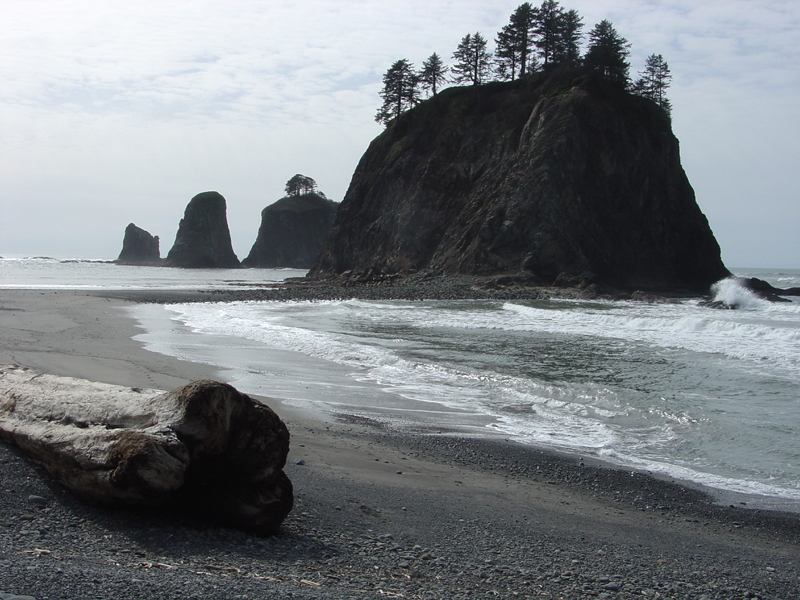| Sea stacks at Rialto Beach in Olympic National Park. The coastal landscape of the Olympic Peninsula reflects the interplay between two dominant forces shaping the landscape. One force is the ongoing crustal uplift associated with regional plate tectonics as the Juan de Fuca Plate is slowly being subducted beneath the Olympic Peninsula as it collides and sinks beneath western North America. This process has cause the Olympic Peninsula to steadily rise over millions of years. The second force is coastal erosion over time and the influence of the rise and fall of sea level associated with the formation of vast continental ice sheets and glaciers that have formed and melted numerous times over the past few million years. During
the last ice age of the Pleistocene Epoch, sea level was more than 300 feet
lower than it is today. When the continental glaciers of the last ice age started melting about 15,000 years ago, sea
level began to rise (again), and shorelines migrated landward, eroding material that was exposed by the gradual tectonic uplift of the peninsula. Wave erosion
is constantly carving away at the shore leaving behind more resistant rocks
as sea stacks offshore (Harris and others, 1997; Tabor, 1987). |

